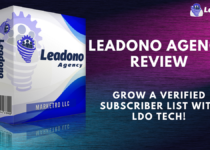What Makes a Great Landing Page
Let’s face it, most people spend more time choosing a sandwich than reading a full web page. You’ve got about five seconds to catch someone’s attention before they click away, so your landing page needs to work fast.
Landing pages carry a lot of weight. Whether you’re asking someone to sign up, book a call, or buy something, a great landing page is all about guiding them smoothly to one clear next step.
Here’s what sets high-converting landing pages apart from the ones people forget two seconds later.
One Goal per Page
When a page tries to get visitors to do five things at once, they often end up doing none of them. That’s why the most effective landing pages stick to one clear goal. It’s like writing a to-do list with 20 things, you end up watching TV with laundry half-folded on the couch.
If the goal is to get someone to book a call, the whole page should make that as easy as possible. Pages with just one clear focus tend to get way more conversions than ones with a mix of offers and distractions.
If you’re selling a product, make sure everything (the copy, the visuals, and the layout) keeps people focused on that offer and the “Buy” button.
Clear and Compelling Headlines
People aren’t reading every line. They’re skimming. Your headline has one job: to let people know they’re in the right place and spark their curiosity enough to stay.
Focus on the outcome they care about, not just what you do. Instead of “Try Our CRM,” try something like “Close More Deals in Less Time.”
Use plain language. If someone wouldn’t say it out loud, rewrite it. A conversational headline makes your message feel more approachable.
Keep it short, bold, and scannable. If someone can get the gist in three seconds, you’re doing it right.
Simple, Easy-to-Read Copy
People shouldn’t need a translator to figure out what your landing page is saying. The best-performing pages use clear, everyday language and focus on how the product or service actually helps.
Keep your sentences short and straightforward. You’re writing for real humans, not a panel of judges.
Talk benefits, not just features. What do people actually get from this?
Break long chunks of text into bite-sized pieces with subheadings, bullets, or bold lines. That way, someone scanning the page can still catch the key takeaways without reading every word.
Build Trust with Social Proof
People want to feel confident before they click. One of the easiest ways to build trust is by showing that other people already said yes.
Don’t forget you can always include:
- A short quote from a happy customer
- Review stars or user ratings
- Trusted brand logos or certifications
- A quick stat like “Over 10,000 signed up this month”
Even one or two trust signals can go a long way.
Strong, Action-Oriented CTAs
The button on your landing page isn’t just decoration, it’s the finish line. If it just says “Submit,” that’s a missed opportunity.
The best buttons are clear, bold, and make it obvious what happens next. Try phrases like “Start My Free Trial,” “Download the Guide,” or “Book My Spot.”
Make sure the button stands out from the rest of the page. And repeat it throughout so it’s always easy to find.
Good CTA copy doesn’t just ask for a click. It shows people exactly what they’re getting.
Mobile-Friendly Design
Most people will see your page on their phone. If your layout doesn’t work on a small screen, it’s a problem.
Use layouts that stack vertically and flow smoothly. Don’t make people pinch, zoom, or scroll sideways.
Keep buttons big enough for thumbs, and don’t clutter the space with too much text.
Test it on different devices before you publish. If it’s annoying on your phone, it’s annoying for everyone else too.
Final Thought
A high-performing landing page doesn’t need a ton of fancy tricks. Just a clear purpose, clean layout, and a little empathy for what the visitor actually wants.
Make it easy to understand. Make it easy to act.
That’s how you turn more visits into real results.


